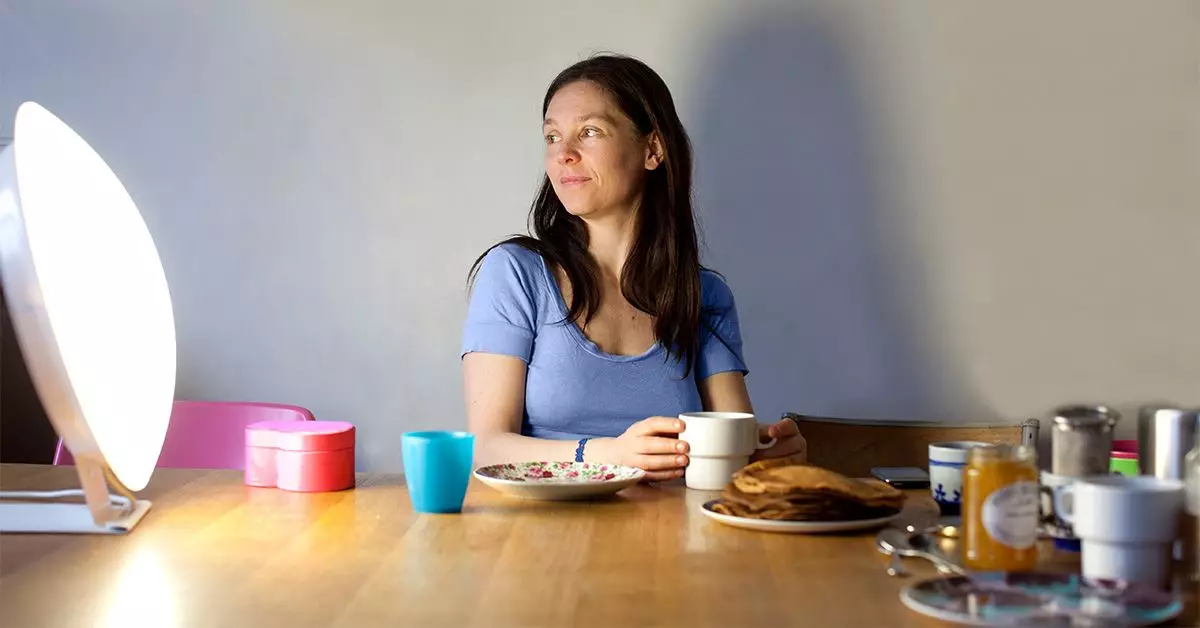Seasonal Depression, often termed Major Depressive Disorder with a Seasonal Pattern, is a mental health condition that can detrimentally affect the lives of many individuals during the winter months. Previously referred to as Seasonal Affective Disorder (SAD), this form of depression arises when the days grow shorter and sunlight becomes scarce. Although it predominantly manifests in winter, some individuals may even experience depressive symptoms as the sun blazes during summer. The lack of natural light during certain seasons can throw off our internal biological clocks, leading to mood disturbances that may seem insurmountable.
The symptoms of Seasonal Depression are not to be trifled with; from chronic fatigue and deepened sadness to issues with sleep and concentration, many individuals find themselves grappling with a darkness that feels all-consuming. Yet, as research unfolds, we discover that effective treatments like phototherapy can surprisingly light the way toward mental well-being.
The Mechanism of Phototherapy
Phototherapy, often called light therapy, serves as a beacon of hope for those enduring the depths of seasonal depression. This treatment mimics the sun’s rays using a specialized lamp and has been a recognized method since the 1980s. Existing largely in the form of light boxes that emit bright, artificial light, this therapy requires individuals to engage with the light for around 30 minutes each morning. Imagine lounging in front of a light box while sipping coffee, engrossed in a book, or even working from home—an everyday routine rejuvenated by a simple act of illumination.
The rationale behind phototherapy is rooted in its ability to stabilize circadian rhythms—our innate biological clock—thereby improving sleep quality and regulating mood. Research indicates that exposure to the specific wavelengths of light can reduce the production of melatonin, a hormone known for inducing sleepiness. At the same time, it boosts the production of serotonin, which plays a vital role in mood stabilization.
Evidence of Effectiveness
Contrary to the skepticism that often accompanies new treatments, studies championing the effectiveness of light therapy have emerged in recent years. A landmark 2019 review highlighted it as a promising standalone treatment for Seasonal Depression, noting its viability alongside pharmacological interventions. This opens avenues for individuals seeking alternatives to medication, especially pregnant women or older adults who may have compelling reasons to limit their drug intake.
Moreover, findings from a comprehensive study in 2024 reinforced light therapy’s positive effects on individuals struggling with winter-pattern seasonal depression. By alleviating symptoms associated with mental health discrepancies, this therapy fosters a transformative experience for those willing to embrace it. The holistic nature of phototherapy renders it a fascinating option amidst various therapeutic strategies.
Who Should be Cautious?
Despite its glowing attributes, phototherapy isn’t a suitable solution for everyone. Individuals with specific eye conditions or photosensitivity should approach this treatment with caution. It’s paramount to consult with a healthcare provider before embarking on any light therapy journey to assess potential risks. For people with conditions that heighten sensitivity to light, such as photosensitive dermatitis or systemic lupus erythematosus, this treatment might exacerbate their symptoms rather than alleviate them.
Additional considerations also include medication interactions. Some pharmaceuticals can induce skin sensitivity to light, thereby complicating the light therapy experience. Hence, a prudent conversation with a doctor is advisable to ensure optimal safety.
Potential Side Effects and Alternative Options
While phototherapy is primarily lauded for its benefits and minimal side effects, some individuals might initially experience discomfort such as headaches or mild eye strain. Such symptoms usually diminish within a few days of consistent exposure. In cases where discomfort persists, decreasing exposure time or adjusting the positioning of the light box could prove beneficial.
Moreover, the financial aspect of light therapy cannot be overlooked. High-quality light boxes can come at a significant cost, and the reality is that many insurance plans do not cover these devices, even when recommended by medical professionals. Therefore, individuals may need to weigh financial feasibility alongside potential mental health benefits before deciding on this route.
As society increasingly acknowledges the importance of mental health, solutions like phototherapy for seasonal depression shine with promise. By mimicking the natural sunlight that many lack during the darker months, individuals may cultivate a renewed sense of hope and vitality, easing the burden of seasonal sadness. It’s time to reframe our outlook on this malady and recognize the potential of light to illuminate even the darkest times.

